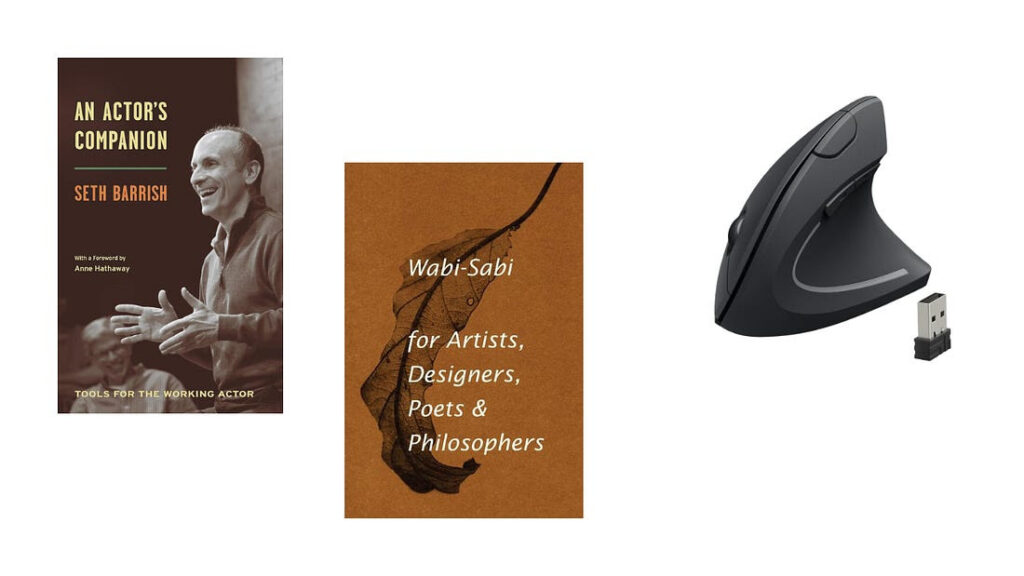Cool Tools 2018 Holiday Gift Guide: Best Kits

Gift suggestions from Cool Tools' founder
The editors of Cool Tools have curated a number of gift suggestions selected from the pages of Cool Tools: A Catalog of Possibilities (which itself makes a great gift), and from the website. This week: Kevin’s best kit picks!
I’ve been making some kits and checking them twice. Here are some of the best nerdy kits that I’ve completed that are both fun to put together, sort of ingenious in their design, and are handsome and/or useful when finished. And they make nice gifts. — KK
Theo Gray, one of the co-creators of Mathematica, has developed a line of transparent machine kits. His idea is to make mechanical functions “transparently obvious.” All the parts are clear plastic, laser cut and separated. The biggest chore of these kits is peeling off the protector film/paper from each side of the acrylic. I find it annoying on the many small parts; others find this mindless work relaxing. The fit of the pieces are eerily precise. They go together fast with metal bolts. No printed instructions are included; you are directed to excellent video tutorials from the website. The devices really do illuminate the mechanical principles behind them. I found that making them helped my understanding the counterpart machine. Gray calls his creations “mechanical gifs” because the clear toys loop their functions visibly. Devices so far include: radial engine, combination lock, rack and pinion steering, and two-speed transmission. A really great kit to build for educational purposes is the $50 Differential Gear set. It will be an aha moment for most folks. — KK


You may have seen a video of a Strandbeest walking along a beach. These are truck-sized multi-legged mechanical beasts powered by the wind. This working model is a smaller version, about 8 inches (20 cm) long. If you point a high powered blast at it, it too will walk. It’s a ingenious, complicated contraption, made simpler to construct because it repeats the same unit 12 times. It takes about 1.5 hours to build. This kit is a classic injection-molded plastic that you clip off from spurs. It fits together without glue; in fact the hinged parts are quite loose since most of them move. It’s a bit of a puzzle putting together, but that is the fun. The quality is surprising high, as is the enjoyment level. I consider this kit to be quite an amazing bargain at $15. — KK

Ugears creates many machines that are laser cut out of thin plywood. Their specialty are works built around gears. Their kits come in full sheets; the parts need to be punched out with some care, but it is still relatively easy to do. Moving parts in the model should be waxed before assembly. Some pieces can be small enough to require tweezers or pliers to hold. Overall the precision is excellent especially for wood. Everything is press fit; no glue is needed. Yet the finished models feel hefty and rugged. A simple starter model is the cool looking Date Calculator ($13, predicts the day of a week of a future date) which took me 30 minutes to finish; you can work up to a Grand Locomotive with tender ($77, a Kickstarter product I backed) which will take 10 hours or so. — KK

These are metal miniatures you assemble from 1 or 2 sheets of thin flat metal that are laser cut. You use small nippers to separate them from Kindle-sized sheets. You then switch to tweezers to assemble the pieces in 3D by inserting their microscopic tabs into microscopic slots. No glue or solder. Some sets may consist of 60 plus itsy bitsy pieces. Did I mention there are very tiny? The final models are very small themselves, no more than a few inches. It requires a degree of dexterity that small children won’t have, although you’ll wish you had their eyesight and small fingers. All kind of models are available for $13 apiece: famous buildings, vehicles, robots, monsters, dinosaurs, and so on. Pluses: inexpensive; Minus: very tiny. — KK

This one is a little pricey, but a great gift. Turn your own looping video, live-photo, Vine, GIF, or stop motion doodle into a physical kinescope. Turn the crank and one second’s worth of animation will loop around inside a brown display box. It takes about 20 minutes to assemble the box from the pre-cut cardboard and plastic pieces. More time will be spent in using the kit’s website to transfer your 24 frames into a form that can be downloaded as a PDF and printed on labels to attach to the 24 flipping cards. The result is a box that displays an analog GIF! As a gift, I used my wife’s favorite live-photo of me doing a crazy dance for her mini-movie machine. It can be “reprogrammed” with new printed material at any time. — KK
$35 from the creators
$45 from Amazon
This kit is pretty useless. The plastic box contains a switch. When you turned the switch on, a finger-like probe comes out of the box and turns the switch off. That’s all it does. It would be better if the action was slower; a newbie might need to do it a couple of times to understand what happens, but either way, nothing really happens. That’s the beauty of it. The $10 kit comes as an unassembled set of plastic pieces to make the box. The engine/finger comes ready to go as a unit which you install.. In fact the finger engine is exactly the same unit in a completely finished Useless Box that costs only a five dollars more, so this kit truly is useless. Still, I spent an enjoyable 30 minutes making something useless. But I have to admit, it’s a cool useless. — KK
Want more? Check out our 2017 Gift Guide picks, as well as our 2016 Gift Guide, 2015 Gift Guide, 2014 Gift Guide and our 2103 Gift Guide
12/7/18








